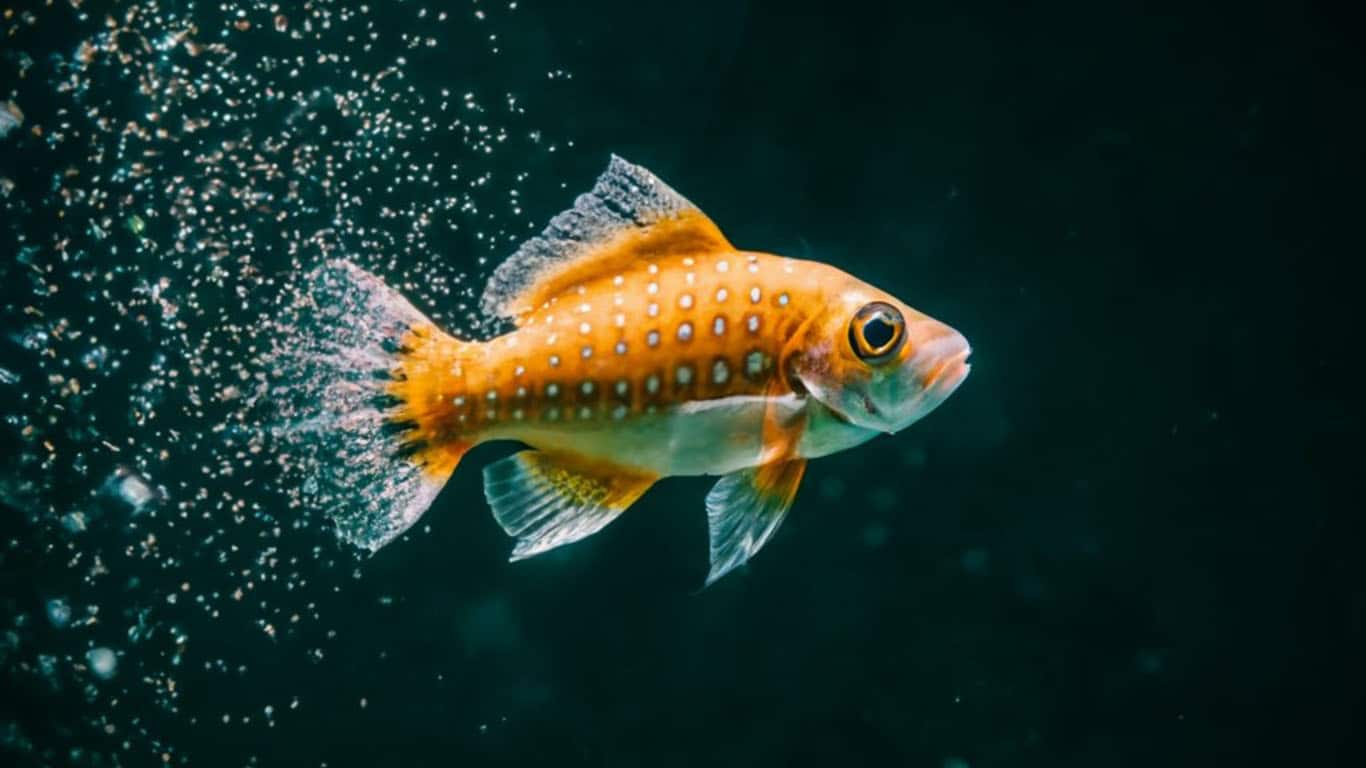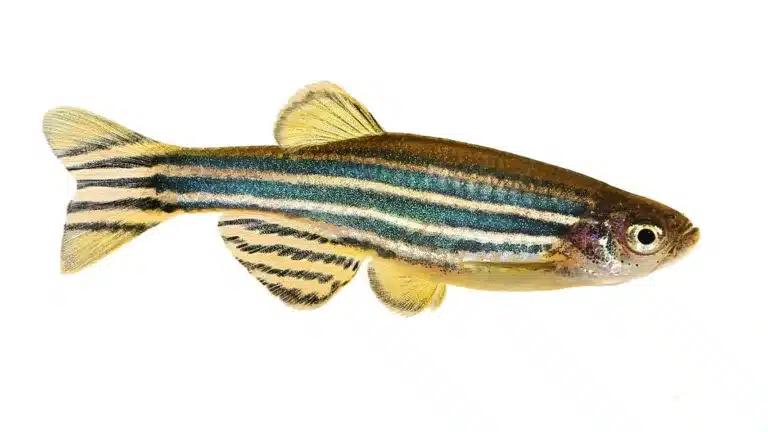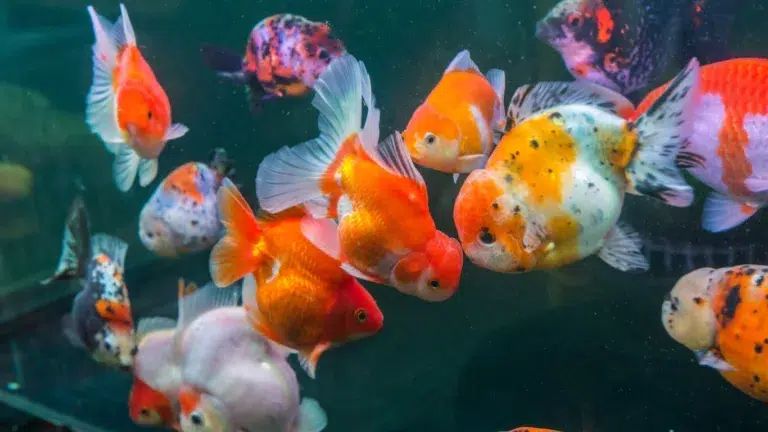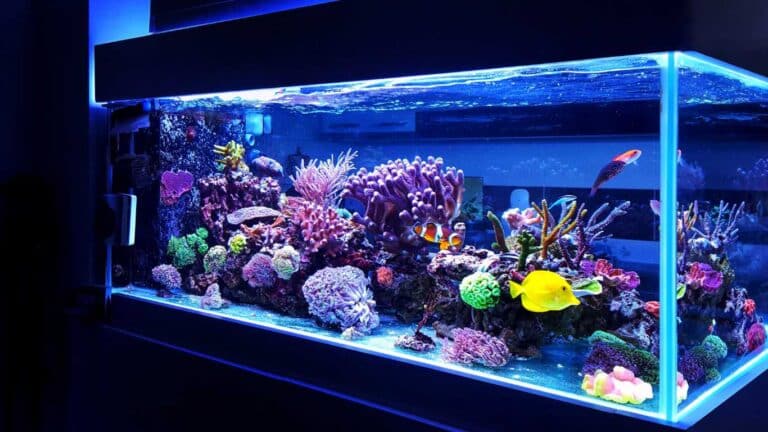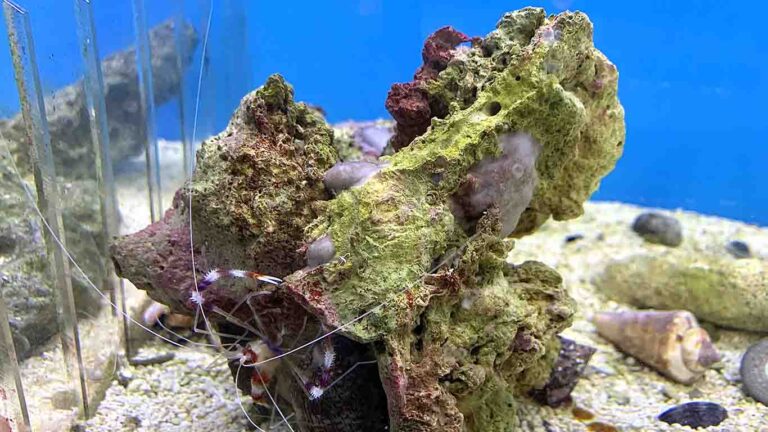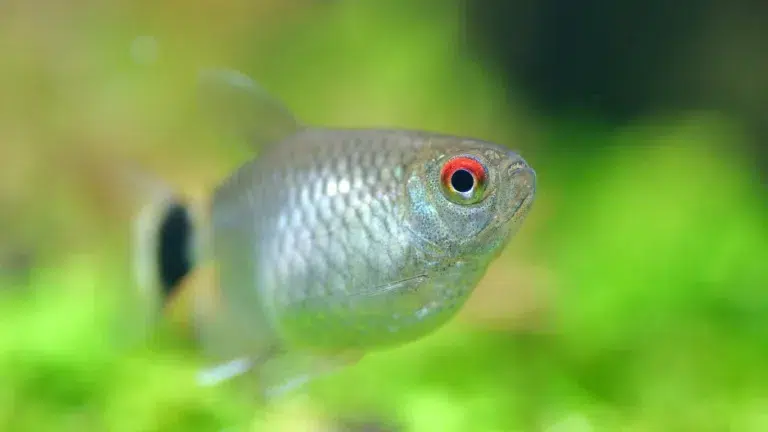Have you ever wondered “do fish pee“? We’re here to uncover the secrets of the underwater world and reveal the truth behind fish excretion. It may surprise you, but they have interesting ways of getting rid of waste.
Researchers from the University of Bern in Switzerland found something interesting about fish. They found out that a fish called cichlid uses pee to communicate. This shows how complex aquatic life can be and reveals hidden interactions underwater.
Fish use urine to communicate when they can’t interact physically. The researchers found cichlid fish produce more urine when they see each other. Interestingly, they become less aggressive when urine can pass through a barrier.
This research reveals interesting fish behavior and communication patterns. It also helps us understand how to maintain an aquarium ecosystem.
Fin-tastic Revelations
Understanding the Fishbowl Environment
Fishbowls make a special home for fish. The bowl’s size, shape, and material really matter for the fish’s health. Fish, like any living thing, need oxygen, the right temperature, and food. We must provide these things in the bowl to keep them healthy and alive.
The fishbowl is where our underwater friends live. It offers a glimpse into their captivating world. Fishbowls are miniature ecosystems. They need careful attention to maintain a stable environment for the fish.
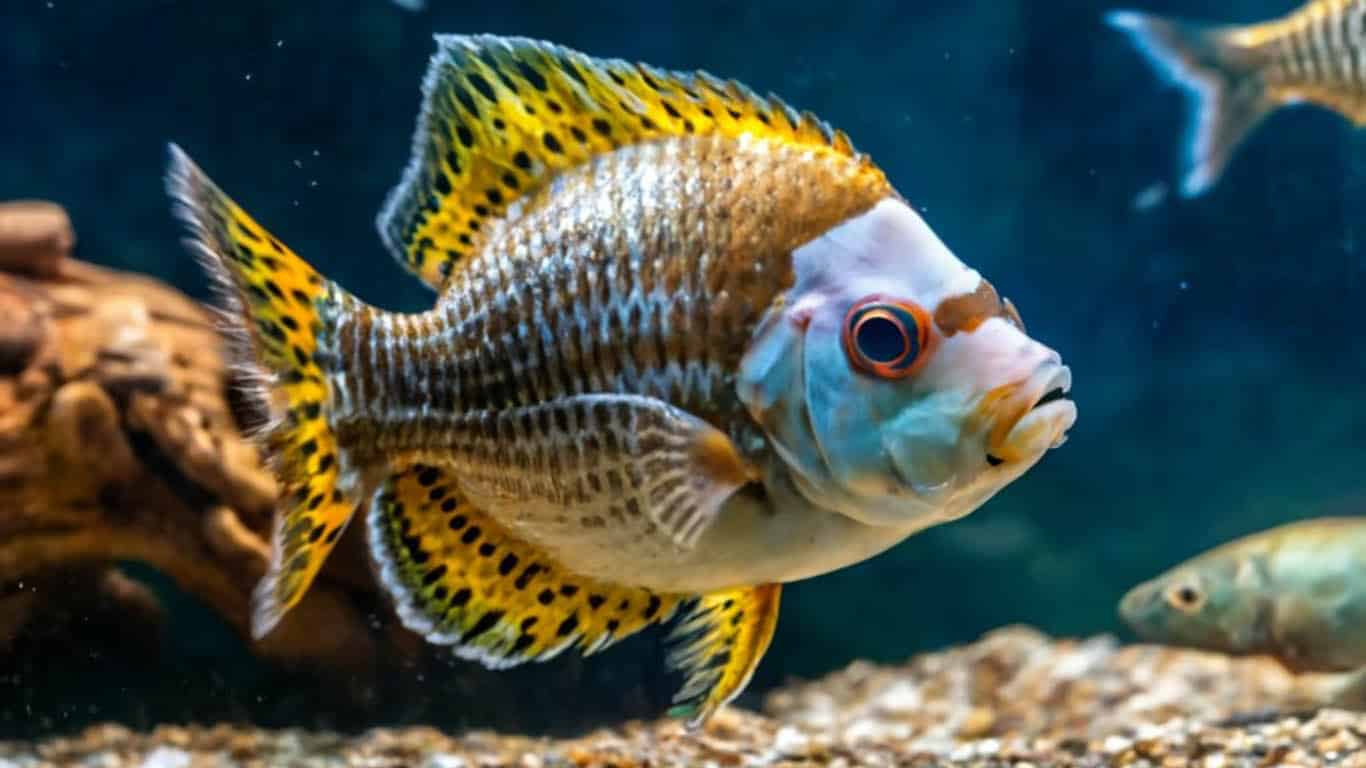
A Microcosm of Aquatic Life
Within the confined space of a fishbowl, a rich microcosm of aquatic life unfolds. The fish, plants, and other creatures interact delicately. They create a beautiful scene, like natural underwater habitats.
Choosing the right size, shape, and material for the fishbowl is important. It helps create a suitable environment for the fish. Let’s explore the key factors to consider:
- Size: The fishbowl should have enough space for swimming and exploring. A larger size helps fish establish territories and fosters a healthier social environment.
- Shape: The shape of the fishbowl impacts water circulation and fish access. Round or oval shapes reduce stagnant areas and create a dynamic aquatic environment.
- Material: Pick a safe, high-quality material for the fishbowl. Choose glass or acrylic for clarity and durability.
Meeting Fish Needs
To keep the fish healthy, it is important to understand and meet their needs in the fishbowl:
- Oxygen: Adequate oxygen is vital for fish survival. Ensure enough oxygen with air pumps, water circulation, or live plants.
- Temperature: keep water stable for fish comfort and health. Research and provide the right temperature range for your fish species.
- Food: Use high-quality food made for your fish species. Don’t overfeed to prevent water issues and health problems.
Understanding and meeting fish needs in the fishbowl keeps them healthy and happy. It ensures they live longer and thrive. A good habitat lets you see their interesting behaviors and beautiful colors.
| Benefits of a Well-Maintained Fishbowl |
|---|
| 1. Healthy and Active Fish: A good fishbowl keeps fish healthy and active. |
| 2. Vibrant Aquatic Display: With proper care, fish and other creatures show their beauty in the fishbowl. |
| 3. Relaxing and Soothing: Watching fish swim in a clean fishbowl can be calming. It helps reduce stress and promotes relaxation. |
| 4. Educational Experience: A fishbowl is great for learning about fish behavior. You can observe their interactions and unique characteristics. |
A healthy fishbowl makes fish happy and lets us see aquatic life. Next, let’s see how to care for baby fish in a small space.
Can Baby Fish Thrive in a Confined Space?
Many aquarium enthusiasts begin with baby fish called fry. Raising them in a fishbowl has unique challenges. It needs special attention to their needs. Successful growth and survival depend on understanding their development and care needs.
Baby fish, also called fry, grow and develop in an amazing way. They start as tiny, vulnerable creatures and become full-fledged fish. They need a safe and nurturing environment during this time.
Table: Fish Development Milestones
| Stage | Description |
|---|---|
| Egg | At the start of life, fish embryos grow inside eggs. |
| Larva | After hatching, fry become larvae with a special body shape. They have a yolk sac for food. |
| Fry | As the yolk sac disappears, fry grow fins, scales, and learn to swim. This starts their independent life. |
| Juvenile | As fry grow up, they develop adult features. This continues until they can reproduce. |
| Adult | Fish that are fully grown can reproduce and help the population grow. |
Making a good home for baby fish means giving them right food, clean water, and enough space. Crowding can stress them and stop them growing. So, think about how many fry can fit in the fishbowl.
The Importance of Fry-Specific Care
Baby fish need special care different from adult fish. They’re sensitive to water quality, temperature, and food. Keeping the right conditions for their growth is important for their health.
“Like human babies, baby fish need special care to grow well, especially in a small space.”
Feeding baby fish is important for their growth. They need small, frequent meals suitable for their size and stage. Pick the right food like brine shrimp or special fry food. It helps them grow well.
Keeping the water clean is important for baby fish. It helps them grow and stay healthy. Regular changes and filtration keep the water fresh and full of oxygen. Check pH and ammonia levels to make sure the environment is right for them.
With care, baby fish can do well in a fishbowl. Understanding their needs and adjusting the environment is important for their growth.
Now, we’ll talk about how filtration affects fish lifespan. We’ll see how it helps keep water clean for a healthy habitat.
The Impact of Filtration on Fish Longevity
Filters are important for fishbowl water quality and fish lifespan. They work like fishbowl lungs, keeping water clean and removing impurities. Good filtration is vital for fish health in the long term.
The filtration system keeps water clean by removing waste and toxins. Bad water quality can harm fish, causing stress, sickness, or shorter lives.
Filters work by utilizing different filtration methods: mechanical, chemical, and biological filtration.
Mechanical filtration catches debris to keep water clear. Chemical filtration removes impurities and odors using substances like activated carbon. Biological filtration uses helpful bacteria. They change harmful things into less harmful ones, making the fishbowl ecosystem healthy.
Keeping the filtration system working well is important. Clean or change filter parts, follow instructions, and check water quality.
Investing in a good filter and taking care of it helps fish stay healthy. It makes them live longer and creates a better home for other aquatic buddies.
Good filtration keeps water clean and helps fish live longer in a fishbowl.
Signs of Stress in Fish
Even though fish live underwater, they can feel stressed. Watch their behavior for signs of stress to keep them healthy in the fishbowl. Common indicators of fish stress include:
- Changes in behavior, such as increased aggression or timidity
- Reduced appetite or sudden weight loss
- Erratic swimming patterns or constant hiding
- Faded or discolored scales
- Frantic or excessive jumping out of the water
Watch how fish behave to catch stress early and help them. Create a calm environment to reduce fish stress as a responsible owner. Consider incorporating the following strategies:
- Provide hiding places: Add plants and decorations to the fishbowl for hiding spots. This helps fish feel safe and secure.
- Maintain water quality: Clean water is vital for fish health. Test water often for pH, temperature, and ammonia levels. Make necessary water changes to keep conditions just right.
- Introduce companions: Some fish are happier with friends. Choose fish that get along. Research which ones can live together peacefully. Being with others can make fish feel better and less stressed.
- Provide proper lighting: Fish need a regular day-night cycle. Keep the fishbowl well-lit during the day. At night, make sure it’s dark for their rest.
| Causes of Fish Stress | Prevention Strategies |
|---|---|
| Overcrowding | Ensure adequate space for each fish by following recommended stocking guidelines. |
| Poor water quality | Maintain a balanced ecosystem by properly filtering the water and performing routine maintenance. |
| Incompatible tank mates | Research fish compatibility and avoid combining species that may exhibit aggression or territoriality. |
| Inadequate nutrition | Offer a varied diet and provide the right amount of food at regular intervals. |
| Lack of stimulation | Add aquarium decorations and provide opportunities for fish to engage in natural behaviors. |
To keep your fish healthy and happy in the fishbowl, learn how to spot signs of stress. Then, use techniques to help them relax. This creates a better environment for them to thrive.

Choosing the Right Fish for a Bowl
Some fish aren’t good for fishbowls. Consider fish’s needs and compatibility. Choose fish carefully for a balanced environment.
Factors to Consider for Fish Selection
- Fish Size: Opt for small-sized fish that can comfortably live in a confined space. Avoid species that require vast swimming areas.
- Water Temperature: Choose fish species that thrive in the temperature range achievable in a fishbowl. Maintaining the right water temperature is essential for the well-being of the fish.
- Water Chemistry: Different fish have varying preferences for water pH levels and hardness. It is important to select fish species that are compatible with the water chemistry requirements of the fishbowl.
- Behavior and Aggressiveness: Consider the temperament of fish species you intend to keep together. Some species may be more aggressive and territorial, while others are peaceful companions.
Understanding the specific needs and characteristics of different fish species will help you create a thriving fish community in your fishbowl. Here are some suitable fish species that can coexist peacefully in a fishbowl:
| Fish Species | Best Suited for Fishbowls |
|---|---|
| Betta Fish (Betta splendens) | Known for their vibrant colors and ease of care, Betta fish can thrive in a fishbowl. However, it is important to keep only one Betta fish per bowl, as they are territorial and may fight with other fish. |
| Goldfish (Carassius auratus) | A popular choice for fishbowls, Goldfish are hardy and can adapt to a variety of conditions. However, they produce more waste compared to other fish species, so regular cleaning and maintenance are essential. |
| White Cloud Mountain Minnow (Tanichthys albonubes) | These small, peaceful fish are well-suited for fishbowls. They are active swimmers and thrive in groups, making them a great choice for creating a lively and tranquil fish community. |
Remember, it is important to provide suitable hiding spots, plants, and decorations within the fishbowl to mimic a natural environment and ensure the well-being of the fish.
Feeding Strategies for Bowl-Dwelling Fish
Proper nutrition is crucial for maintaining the health and well-being of fish in a fishbowl. To ensure their nutritional needs are met, it is important to understand effective feeding strategies and strike the right balance in their diet.
When it comes to feeding fish in a bowl, it’s essential to provide them with a varied and balanced diet. This includes a combination of staple fish food, live or frozen food, and occasional treats.
Staple Fish Food
Staple fish food comes in various forms such as flakes, pellets, or granules. These commercial fish foods are specially formulated to provide the necessary vitamins, minerals, and nutrients that fish need for optimum health. Look for fish foods that are specifically designed for the species of fish you have in your fishbowl.
Pro Tip: To prevent overfeeding, only give your fish the amount of food they can consume within a few minutes. Uneaten food can pollute the water, leading to poor water quality and potential health issues for the fish.

Live or Frozen Food
Although staple fish food is nutritionally complete, supplementing their diet with live or frozen food can provide additional nutrients and enhance their feeding experience. Live food such as brine shrimp or daphnia can stimulate natural feeding behaviors and add variety to their diet.
Alternatively, frozen food options like bloodworms or mysis shrimp offer similar benefits. Thaw the frozen food before feeding to ensure the fish can easily consume it.
Occasional Treats
Just like humans, fish enjoy the occasional treat. Treats can include small amounts of vegetables like blanched spinach or zucchini. These treats provide added nutrition and can be a source of enrichment for the fish.
Remember not to overfeed your fish with treats as they should only make up a small portion of their overall diet.
Feeding Frequency
The feeding frequency for fish in a fishbowl depends on the species and their individual needs. As a general guideline, feed your fish small portions 2-3 times a day. Observe their behavior and adjust the feeding schedule accordingly.
It’s important to strike the right balance in feeding your fish. Underfeeding can lead to malnutrition and health issues, while overfeeding can cause obesity, poor water quality, and potential diseases.
| Feeding Strategy | Advantages | Considerations |
|---|---|---|
| Staple Fish Food | – Balanced nutrition – Convenient to use | – Monitor for overfeeding – Choose appropriate fish food for your fish species |
| Live or Frozen Food | – Stimulates natural feeding behaviors – Adds dietary variety | – Ensure proper thawing of frozen food – Avoid overfeeding |
| Occasional Treats | – Provides enrichment – Adds nutritional variety | – Limit the quantity of treats – Choose appropriate vegetables |
By implementing these feeding strategies and maintaining a feeding balance, you can help promote the health and vitality of your fish in a fishbowl.
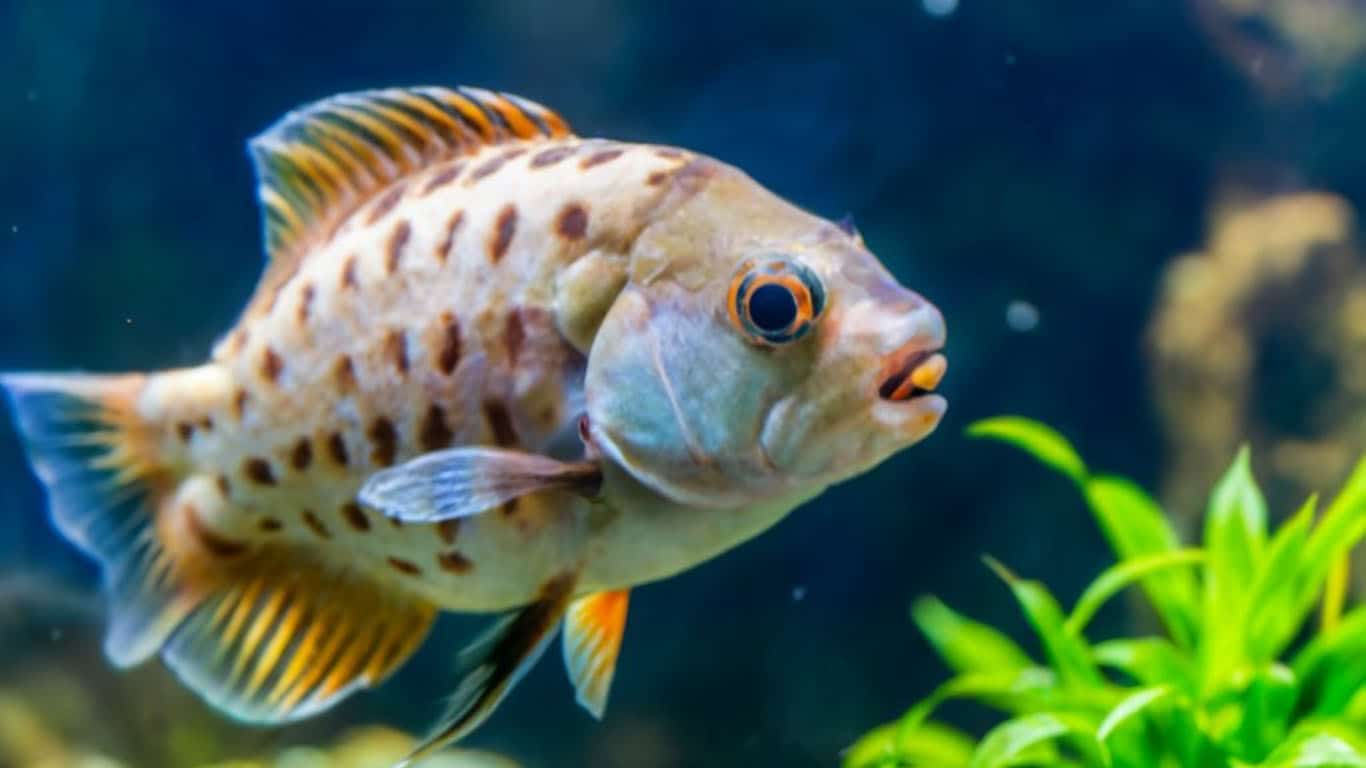
Maintaining Water Quality
The quality of water in a fishbowl is crucial for the well-being of the fish. Clean water provides a healthy habitat environment, promoting optimal fish health and longevity. To maintain water quality, it is essential to understand the fundamentals of water maintenance, including regular cleaning and monitoring.
Fish rely on clean water for their survival as it directly affects their respiratory system, immune system, and overall physiological functions. Dirty water can lead to stress, disease, and even death. Therefore, it is paramount to prioritize water cleanliness in your fishbowl.
Here are some key steps to ensure clean and habitable water for your fish:
- Frequent water changes: Regularly replace a portion of the water in the fishbowl to remove accumulated waste, excess nutrients, and toxins. Aim for a partial water change of about 25% every one to two weeks, depending on the size of your fishbowl and the number of fish.
- Proper filtration: A filtration system plays a vital role in maintaining water quality by removing impurities, debris, and harmful substances. Choose a suitable filter size and type for your fishbowl, ensuring it adequately circulates and cleans the water.
- Monitor water parameters: Test the water regularly using a reliable water testing kit. Keep an eye on essential parameters such as ammonia, nitrite, nitrate, pH, and temperature. Maintaining these levels within the appropriate range is crucial for the health of the fish.
- Remove uneaten food: Uneaten food can quickly decompose, leading to poor water quality. Ensure that your fish consume all the food within a few minutes to prevent excess waste. If there is any leftover food, remove it promptly using a fine net or siphon.
Moreover to these steps, it’s essential to observe and understand the behavior of your fish. Unusual swimming patterns, changes in appetite, or signs of stress can indicate water quality issues. Taking prompt action, such as performing an extra water change or adjusting the filtration system, can alleviate any problems and restore a clean and habitable environment for your fish.
“Keeping the water clean and habitable is like providing a sanctuary for your fish.”
Remember, clean water is the foundation of a thriving aquatic ecosystem within your fishbowl, creating a healthy and vibrant environment for your fish.
Common Misconceptions About Fishbowls
There are many myths and misconceptions surrounding fishbowls and their maintenance. It’s important to separate fact from fiction in order to promote responsible fishkeeping and ensure the well-being of the fish. Let’s debunk some of these common misconceptions:
Fish Can Thrive in Small Fishbowls
Contrary to popular belief, fish cannot thrive in small fishbowls. While fishbowls may be visually appealing, they do not provide adequate space or environmental conditions for fish to live healthily. Fish require sufficient swimming space and proper filtration systems to maintain water quality. It is essential to provide a suitable tank with ample space for the fish to grow, swim, and explore.
A Fishbowl is Low-Maintenance
Many people assume that fishbowls are low-maintenance and do not require regular care. However, fishbowls need just as much attention as larger aquariums. Water quality must be monitored and maintained, and regular cleaning is necessary to remove waste and prevent the buildup of harmful substances. Responsible fishkeeping involves establishing a proper maintenance routine to ensure the health and well-being of the fish.
Fishbowls are Suitable for Any Fish Species
Another misconception is that any fish species can thrive in a fishbowl. In reality, certain fish species have specific care requirements that cannot be met in a constrained space like a fishbowl. Some fish need more room to swim, specific water conditions, or tank mates for social interaction. Researching and selecting fish species that are suitable for smaller environments is crucial to their well-being.
“Proper fishkeeping involves providing fish with an environment that closely resembles their natural habitat, allowing them to exhibit their natural behaviors and thrive.”
Fishbowls Don’t Need Filtration Systems
Many people believe that fishbowls do not require filtration systems. However, filtration is essential in maintaining water quality and ensuring a healthy environment for the fish. Filters remove harmful substances, such as ammonia and excess waste, that can accumulate in the water. The absence of proper filtration can lead to poor water quality and negatively impact the fish’s health.
Regular Water Changes Are Unnecessary
Some fish owners falsely believe that they don’t need to perform regular water changes in a fishbowl. However, regular water changes are essential in maintaining clean and healthy water conditions. Water changes help remove accumulated waste, freshen the water, and replenish essential nutrients. Failure to perform regular water changes can lead to imbalanced water chemistry and compromised fish health.
Fishbowl Myths
| Myth | Reality |
|---|---|
| Fish can live happily in small fishbowls. | Fish require proper space to swim and thrive. |
| Fishbowls don’t need filtration systems. | Filtration systems are crucial for water quality. |
| You don’t need to perform regular water changes. | Regular water changes are necessary to maintain water quality. |
By debunking these fishbowl myths, we can promote responsible fishkeeping practices that create a better environment for our aquatic companions. It’s important to provide fish with the appropriate space, filtration, and care they need to thrive. Let’s ensure the well-being of our fish and enjoy the beauty of these underwater creatures.
DIY Tips for a Happy Fishbowl
Enhancing the well-being of fish in a fishbowl involves more than just providing the basic necessities. Practical do-it-yourself (DIY) tips can help improve the overall happiness of the fish by adding elements to the fishbowl that promote their natural behavior and create an enriching environment.
1. Adding Fishbowl Enhancements
Transform your fishbowl into a captivating underwater paradise by incorporating various enhancements. Consider adding:
- Aquatic plants: Live plants not only provide aesthetic appeal but also offer hiding spots and oxygenation for the fish.
- Decorative ornaments: Introduce fish-safe ornaments, such as caves or driftwood, for the fish to explore and seek shelter in.
- Bubble curtain: Create a mesmerizing effect by placing an air stone or bubble curtain in the fishbowl to enhance oxygenation and provide visual stimulation.
2. DIY Toys and Games
Keep your fish entertained and engaged with simple DIY toys and games. Try these ideas:
- The food hunt: Attach a small treat or piece of food to a string and let it float in the fishbowl. The fish will enjoy chasing and “catching” their meal.
- Bubble play: Blow gentle bubbles into the fishbowl using a clean straw. Watch as the fish interact with the bubbles, providing mental stimulation and physical activity.
- Mirror reflection: Place a small mirror outside the fishbowl for brief intervals. The fish will be intrigued by their reflection, sparking natural behaviors like flaring fins or curious exploration.
3. Lighting and Ambience
Consider the following lighting and ambience tips to create a soothing environment:
- Lighting schedule: Maintain a consistent lighting schedule to mimic the natural day-night cycle. Use a timer to regulate the lighting duration.
- Subtle colors: Experiment with colored LED lights or paper filters to create a calming and visually appealing atmosphere in the fishbowl.
- Background visuals: Attach a fish-themed background or wallpaper on the outside of the fishbowl to provide a sense of depth and visual interest for the fish.
4. Mindful Placement
The placement of the fishbowl can greatly impact the fish’s well-being. Consider the following:
- Avoid direct sunlight: Place the fishbowl in an area away from direct sunlight to prevent excessive heat and harmful algae growth.
- Avoid high-traffic areas: Position the fishbowl away from busy areas to minimize stress caused by excessive noise and movement.
- Provide a serene backdrop: Place the fishbowl against a backdrop of calming colors or natural scenery to create a peaceful environment for the fish.
“By incorporating these DIY tips, fish enthusiasts can provide their aquatic pets with a stimulating and nurturing fishbowl environment, ensuring their well-being and overall happiness.”
| Fishbowl Enhancement | Benefits |
|---|---|
| Aquatic plants | Natural hiding spotsOxygenationAesthetically pleasing |
| Decorative ornaments | Providing shelterExploration opportunitiesCreating a visually appealing environment |
| Bubble curtain | Enhanced oxygenationVisual stimulation |
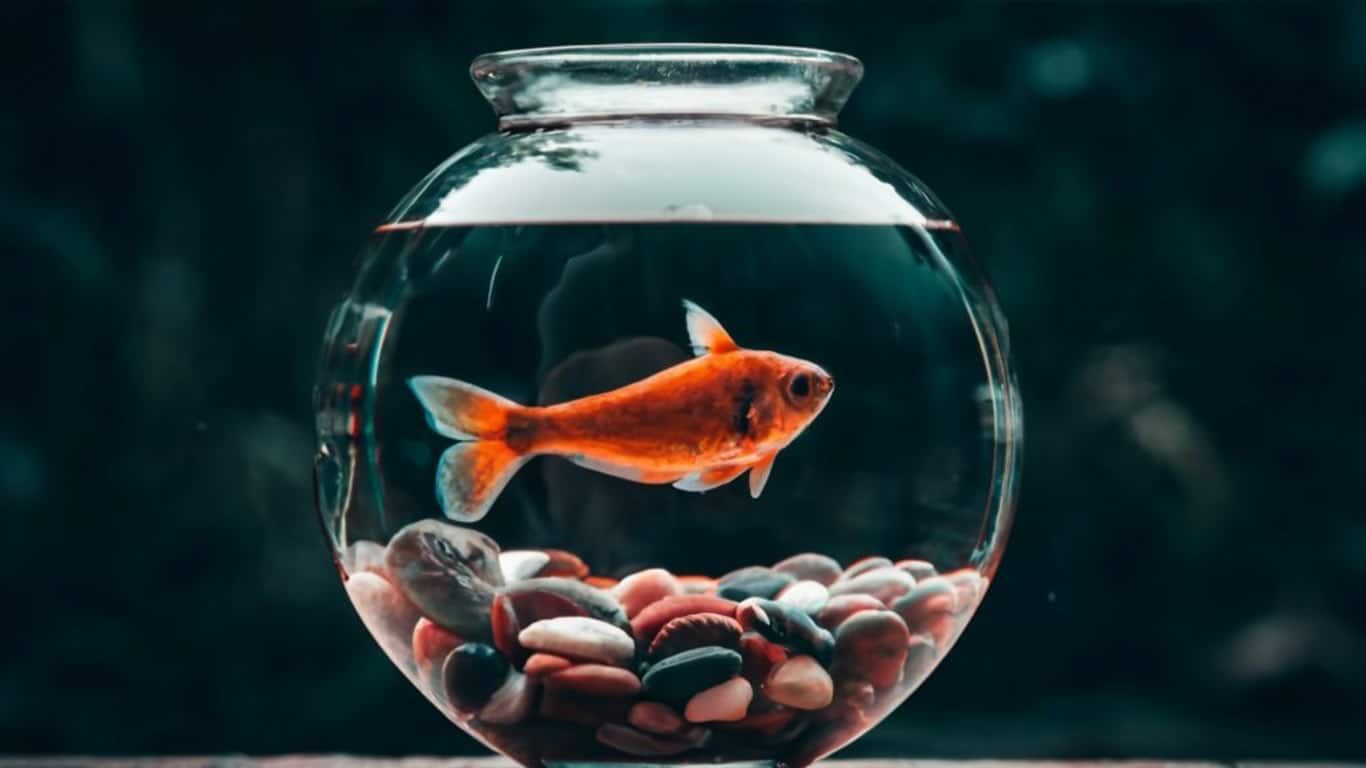
With these DIY tips, you can create a fishbowl environment that not only meets the fish’s basic needs but also enhances their well-being and happiness. Providing a stimulating and enriching habitat contributes to the overall health and vitality of your fish.
Final Remarks
To sum up, fish have a unique way of excreting waste that differs from mammals. Instead of urinating, fish primarily excrete waste through their gills in the form of ammonia. This waste excretion method is crucial for their survival in the underwater world, where fish biology thrives. By understanding how fish excrete waste, we gain valuable insights into the fascinating underwater world.
Fish excretion plays a vital role in maintaining the delicate balance of the aquatic ecosystem. The production of ammonia by fish not only removes waste from their bodies but also provides essential nutrients for other organisms in the underwater environment. This waste excretion process is a testament to the intricate interconnectedness of fish biology and the underwater world.
Exploring the excretion methods of fish opens up a deeper appreciation for the wonders of aquatic life. It allows us to unravel the mysteries of fish biology and gain a glimpse into the fascinating world that exists beneath the water’s surface. Understanding fish excretion is just one piece of the puzzle that contributes to our overall understanding and admiration of the amazing underwater world.
FAQ
Do fish pee? Unveiling aquarium secrets!
Fish do excrete waste, but they do not urinate in the same way as mammals. Fish primarily excrete waste through their gills in the form of ammonia, which is essential for their survival in their aquatic habitat.
How does the fishbowl environment impact the well-being of fish?
The size, shape, and material of the fishbowl play a crucial role in the overall well-being of the fish. It is important to meet their basic needs such as oxygen, temperature, and food within the confines of the fishbowl environment to ensure their health and survival.
Can baby fish thrive in a confined space like a fishbowl?
Raising baby fish, also known as fry, in a fishbowl presents challenges and requires specific attention to their unique needs. Understanding their development and care requirements is essential for their successful growth and survival in a restricted environment.
How does filtration impact the longevity of fish in a fishbowl?
Filtration systems in a fishbowl play a vital role in maintaining water quality, which directly impacts the longevity of the fish. Filters act as the lungs of the fishbowl, removing impurities and maintaining a clean and habitable environment for the fish.
What are the signs of stress in fish?
Signs of stress in fish include changes in behavior, reduced appetite, and erratic swimming patterns. Creating a serene environment in the fishbowl that promotes relaxation and well-being is essential to minimize stress in the fish.
Which fish are suitable for life in a fishbowl?
Not all fish are suitable for life in a fishbowl. When selecting fish, it is important to choose species that can thrive in a confined space and coexist peacefully with other fish. Understanding the compatibility and specific needs of different fish species is crucial for creating a harmonious and balanced aquatic environment in the fishbowl.
What is the importance of proper nutrition for fish in a fishbowl?
Proper nutrition is essential for the health of fish in a fishbowl. It is important to understand effective feeding strategies and strike the right balance to provide the necessary nutrients for the fish. Overfeeding or underfeeding can lead to health issues and impact the overall well-being of the fish.
How can water quality be maintained in a fishbowl?
The quality of water in a fishbowl is paramount for the well-being of the fish. Understanding the essentials of water maintenance, such as regular cleaning and monitoring, is crucial to ensure a clean and habitable environment for the fish.
What are some common misconceptions about fishbowls?
There are many common misconceptions surrounding fishbowls and their maintenance. It is important to debunk these myths and provide accurate information to ensure responsible fishkeeping. Understanding the truth about fishbowls can help create a better environment for the fish and promote their well-being.
How can the well-being of fish in a fishbowl be enhanced?
Enhancing the well-being of fish in a fishbowl involves more than just providing the basic necessities. Practical do-it-yourself tips can help improve their overall happiness by adding elements to the fishbowl that promote their natural behavior and create an enriching environment.
What insights can be gained about fish biology from understanding their waste excretion methods?
Understanding the unique biology of fish and their waste excretion methods provides insights into the underwater world and the wonders of fish biology. Fish primarily excrete waste through their gills in the form of ammonia, which is essential for their survival in their aquatic habitat.

